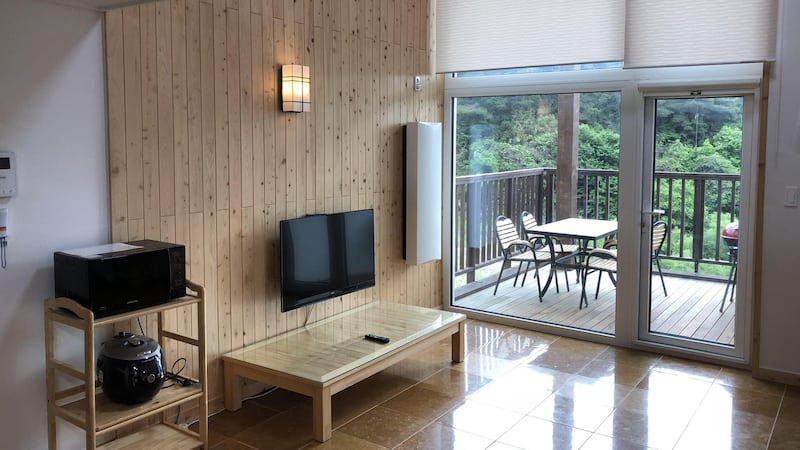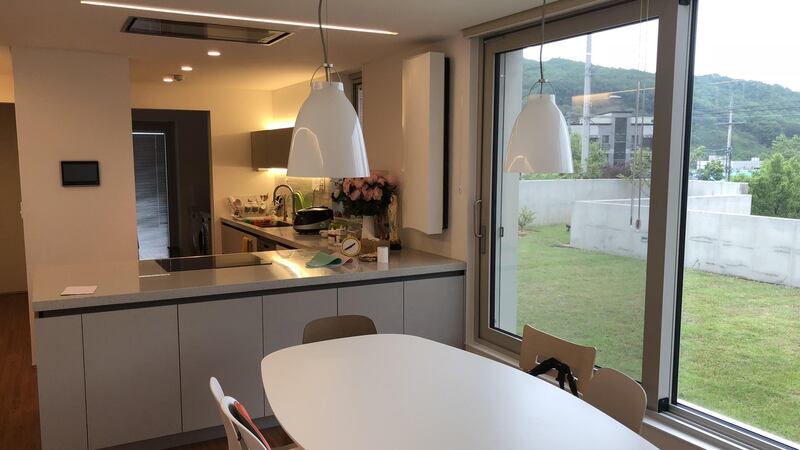We don’t use cow dung to warm our homes any more nor do we rely on the half-door for ventilation, newer technologies have replaced them. So, why then are we still using oil or gas boilers for heating and large holes in the walls with louvred grates as ventilation when there are far more efficient and sophisticated alternatives?
One reason is that tradesmen are often slow to adopt unfamiliar technologies and so we don’t hear of the newer alternatives. What are the more ingenious advances in heating and ventilation that are affordable, practical and sustainable?

Air-to-water heat pumps
In terms of home heating, the cutting-edge technology is air-to-water heat pumps, which now attract grants of €3,500 from the SEAI. They work by transferring heat from the air outdoors through a heat exchanger to a refrigerant liquid that boils at ridiculously low temperatures causing it to expand into a gas and release its heat differential into water that then goes through your radiators or underfloor heating. It is based on the same technology used for fridges, but in reverse. The heat pump sits outside in a compact unit like an air-conditioner, while inside is a box that transfers the heat from the air to water. It’s quieter, smaller and far more efficient than a standard oil or gas burner.
Air-source heat pumps used to be only suitable in warmer climates, but the technology has improved such that 20 per cent of Swedish homes are now heated by them. That said, the house must be well insulated, as unlike an oil or gas boiler which heats radiators to 60-65 degrees, heat pumps will only warm water to 30-35 degrees. The heat is instead built up gradually by having the heat pump working continuously. The system would struggle to cope in a draughty, uninsulated house.
While heat pumps literally can create heat out of thin air, there are costs associated with the constant pumping of the refrigerant liquid through the system. Your electricity bill will rise. NightSaver tariffs can alleviate this, as can installing photovoltaic panels (PV) to harness electricity for free from the sun.
Air-to-air heat pump
An even more efficient alternative to this system is an air-to-air heat pump, which again captures the heat differential between the outside air and a refrigerant and transfers it directly to an air fan inside the house. The efficiency of heating systems is measured in COP (coefficient of performance), and air-to-air heat pumps can have a COP of 6 compared to 4 for air-to-water; meaning that for every unit of electricity it consumes, it will produce 6 units of heat; though these figures depend on the time of year and the efficiency of the unit. Air-to-air heat pumps are more suited to open-plan buildings where you are not trying to transport the heat between different rooms via radiators.
Other forms of heat pump are larger and more complex; the primary one being ground-source heat pumps (or geothermal) which extract heat through pipes that are buried horizontally or drilled vertically into the ground, and the other being water-source heat pumps which take heat from a well, river or pond. These forms are more energy efficient year-round as the ground and water temperatures are more stable than air. The COP of an air-to-water system can drop to 2 in winter, but even that is still well over 100per cent more efficient than your old oil boiler.
Air-to-water heat pumps can also heat the water in your hot cylinder and will connect easily to underfloor heating systems and most newer types of radiators, though occasionally larger radiators may have to be installed to compensate for the lower heat temperatures flowing through them.

Heat-recovery ventilation
In terms of ventilation, Ireland has always relied on our leaky, draughty homes to ventilate themselves. We were happy to just open a window when it got too muggy, to wipe the condensation off the windows and repaint the mildew growths in darker corners. Yet as we seal and insulate our homes the air has become increasingly musty and stale. It can be five times more polluted than outside. Traditionally we relied on a vent in each room, consisting of a length of gutter pipe through the wall with a louvered grate on the outside, and, at best, some form of baffle inside to stop the wind blowing straight in on us.
In really damp spots like bathrooms we use rattly Vent-Axia fans that clatter during gales and harbour tiny graveyards of dead spiders, dust and gunge. While we may have heard of new passive solar houses with ducting in each room that constantly recycles the air, filtering out impurities and sending pre-warmed, oxygenated air flowing serenely throughout the building, installing such a system is just not practical in old homes.
Fortunately, there are now alternatives available: small compact heat recovery ventilation units that require no bulky ducting and that fit snuggly inside the wall cavity. These heat-recovery ventilation (HRV) systems quietly and efficiently extract stale air from the house and replace it with fresh filtered air that has been pre-warmed using the excess heat from the old expelled air. Just a few years ago they were only about 65 per cent efficient, meaning that 35 per cent of your heated air was lost each time the air circulated, but the latest systems are 90 per cent efficient.
Decentralised ventilation
The most innovative and efficient is the Lunos E2 Neo made by a small German company who are expanding rapidly, benefiting from the fact that decentralised ventilation is growing by 6 per cent every year, while centralised is in decline. It fits inside a pipe the size of a CD that runs through the wall where the old air vent was, and thanks to a tiny, state-of-the-art motor is barely audible, even in a bedroom.
The units are installed in pairs, working in a counter-flow, with one supplying air while the other exhausts it and air is moved to all corners of the room. They also filter the pollen and other particles in the airand help to moderate humidity levels in winter. They cost €1,175 (ex Vat) for a pair, with running costs of about 42c per year.
An alternative model named Fresh-r, has been developed by a Dutch company which works on a different principle to Lunos, but still expels stale indoor air and replaces it with fresh air that is pre-warmed through a heat-exchanger about the size of an electricity meter box built into an exterior wall. Again, there are no pipes or ducts needed, and automatic monitors in the unit will check C02 and humidity levels and adjust fan speed accordingly. Fresh-r claims to deliver a seven year payback compared with 50 years for “always on” ducted HRV systems. The unit itself costs €2,250 ex Vat, with filters for pollen and diesel particulates an extra €250. The annual running cost is €5 compared to €120 for a conventional ducted system.
The technology in this sector is advancing so quickly that within a few years even these technologies may be largely redundant. Meanwhile Irish plumbers no doubt will continue to install diesel and gas boilers into Irish homes despite there being so many better alternatives available. seai.ie, lunos.ie, fresh-r.eudaikin.ie











